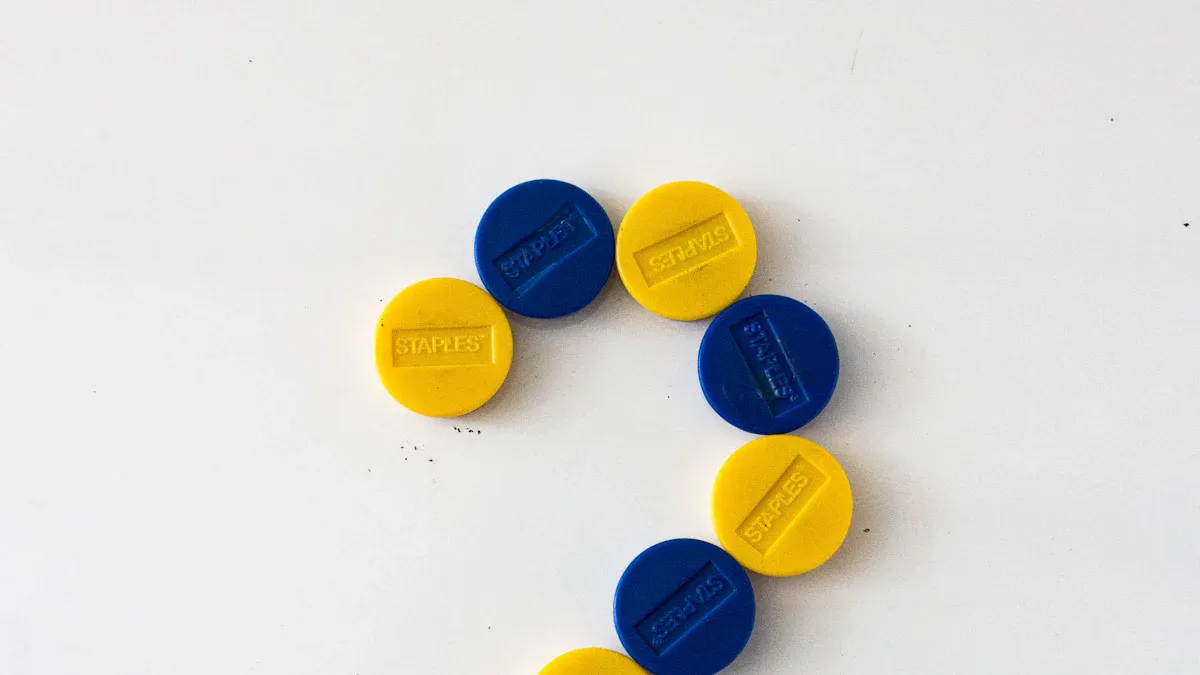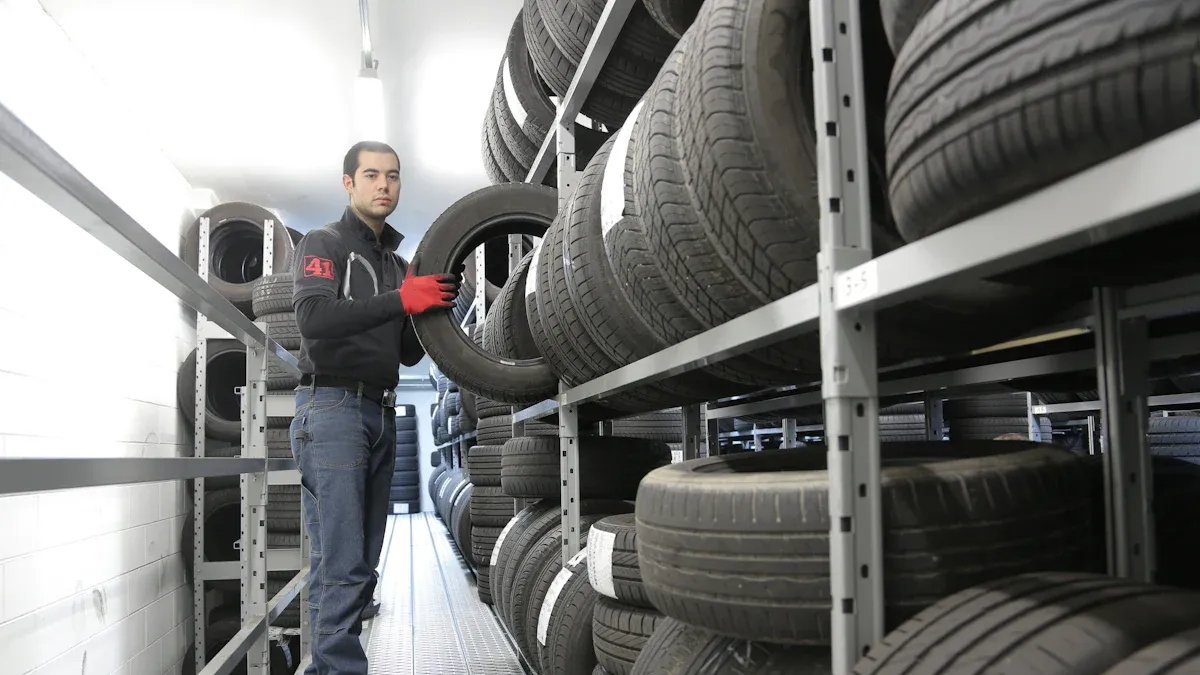Understanding PPM in IATF 16949 Certification

PPM in IATF16949 refers to parts per million, indicating the number of defective parts found in every one million items produced. Within the automotive sector, PPM in IATF16949 serves as a crucial indicator of quality. It enables organisations to assess whether products are manufactured correctly and whether suppliers are performing to standard.
Auditors closely monitor PPM in IATF16949 as a key performance indicator, alongside other quality metrics such as scrap rates and customer complaints. By tracking PPM in IATF16949, companies are better equipped to fulfil customer requirements and monitor their processes in real time. This focus supports ongoing improvement on the production line. Organisations rely on PPM in IATF16949 to reduce the incidence of defective parts, enhance supplier accountability, and ensure compliance with established quality standards.
PPM in IATF16949

What is PPM?
Parts per million, or PPM, is a common way to measure quality in car factories. It tells us how many bad parts are found in every one million made. Companies use PPM in IATF16949 to see if their products are good, even when they make a lot. If a factory finds one bad part in a million, the PPM is one. This makes it easy for teams to see how many mistakes happen, even with big numbers.
PPM in IATF16949 helps teams watch and check quality. It lets them see if more bad parts are showing up. They can fix problems before they get worse. Car companies like this way because even one bad part can be dangerous. It could cause a car to break down or be unsafe. Imagine a big jar with a million white stones and a few black ones. The black stones are the bad parts. They are rare, but they matter a lot.
Manufacturers use PPM in IATF16949 to follow strict rules. This number is important for many quality checks in car making. It also helps companies see if they are as good as others or meeting what customers want. By using PPM, teams can see if their work is right and meets the rules.
Why PPM Matters
PPM in IATF16949 is very important for checking quality. It is a main way to see how well teams and suppliers are doing. Companies use this number to check if they are following the rules and what customers ask for. Checking PPM often helps teams find weak spots and make better products.
A real example at ARaymond India Pvt Ltd shows how PPM helps find risks. The company uses PPM with other numbers, like how well machines work and customer complaints. This helps them find which machines or steps are risky. They can then check these more closely. This makes their quality system stronger. The example also shows why it is good to match checks with world standards.
PPM in IATF16949 is linked to how well things are made. Teams use it to see if parts are made the right way. If the PPM goes up, it means more bad parts or a problem. Teams can act fast to stop more bad parts from going out. Watching PPM helps teams keep getting better and meet all the rules.
Studies show that numbers like PPM, DPMO, and process capability index help companies check and improve quality. These numbers show if things are made the right way. They also show if managers are helping teams do better. Companies using these tools see better work and happier customers.
Note: PPM in IATF16949 is more than just a number. It helps teams check their work, fix problems, and make sure products are good.
A table below shows the main ways PPM in IATF16949 is used:
Use of PPM in IATF16949 | Description |
|---|---|
Measurement of Defects | Counts how many bad parts are in a million made |
Monitoring and Measurement | Helps teams keep checking their work |
Meeting Requirements | Makes sure rules and customer needs are met |
Process Performance | Checks if work is done the right way |
Continuous Improvement | Finds ways to make work better and safer |
Calculation

Formula
PPM means parts per million. In IATF 16949, teams use PPM to show how many bad parts are in a million. The formula is easy to use and helps teams check quality. Teams use it to watch every step in making products.
PPM = (Number of Defective Parts / Total Number of Parts Delivered) × 1,000,000
This formula lets teams compare quality between batches and suppliers. It also helps them see changes in quality quickly. Many rules, like those from the European Medicines Agency and ICH Q7, say teams must use proven ways to measure. These rules make sure the calculation is right and can be trusted.
Tip: Always use the real total number of parts delivered. Mistakes happen if teams count only one batch or miss some parts.
Some rules and guides that help teams measure well are:
Health-Based Exposure Limits (HBELs) for safe levels.
Checked cleaning steps for good measurement.
Changes for wetness or material types to make results better.
Example
A simple example can help teams learn the formula. Imagine a factory sends 50,000 parts to a customer. The customer finds 3 bad parts. The team wants to find the PPM.
Step-by-step:
Bad parts: 3
Total parts sent: 50,000
Use the formula:
PPM = (3 / 50,000) × 1,000,000 = 60
The PPM is 60. This means there are 60 bad parts in every million sent. Teams use this number to check if their work is good enough.
Common mistakes are:
Using the wrong total for checking.
Missing some bad parts.
Not changing the formula when batch sizes change.
A table shows the steps:
Step | Value |
|---|---|
Defective Parts | 3 |
Total Delivered | 50,000 |
PPM | 60 |
Teams use this number to check their work. It helps them make better products and stop problems before they grow.
Quality and Compliance
Customer Requirements
Meeting customer requirements is very important in IATF 16949. Car companies must follow strict rules to make sure products are good. Customers often have their own rules for quality, defects, and audits. PPM helps companies check if they meet these rules.
A step-by-step plan helps teams reach this goal:
Teams learn what each customer wants for audits.
They make audit plans using customer and industry rules.
Auditors get training about what customers need.
Companies use the audit rules and checks that customers ask for.
Teams look at customer papers and product details.
Audit reports use the same style as the customer and show what was found and how to fix it.
Companies talk with customers during audits.
Audit results help teams keep getting better.
Later audits check if fixes worked.
This plan helps companies meet what customers want and keep products good. Quality checks like PPM show if work meets these needs. Many reports say QMS software helps by tracking PPM, following rules, and giving good data. Companies use these tools to control work, meet rules, and make sure they do what customers want.
Risk and Improvement
PPM is important for finding risks and making things better. Teams use PPM numbers to find problems and improve products. They use tools like FMEA, control plans, and process checks to spot and lower risks.
Companies keep records like risk reports, FMEA files, and fix-it reports. These records show how teams handle risks and get better. Teams learn from audits, scrap checks, and actions to stop problems before they start. Preventive actions include making designs easy to build, checking materials, and keeping machines working well.
Teams also use ways like group talks, lists, and root cause checks to find risks. They look at risks and decide which are most important. Project tools and data help teams watch risks and improve quality. Checking all the time makes sure work stays good and meets rules.
A focus on quality and always getting better grows from these steps. Companies lower risks like recalls and problems by managing work well. This helps meet what customers want and keeps products at a high standard.
Process Monitoring
Internal Control
Watching how things are made is very important in car factories. Teams use PPM numbers to see if their work meets what customers want. They also use it to make sure products are good. Checking often helps teams find problems early. This means they can fix things fast and keep work steady.
IATF 16949:2016 has rules for checking and measuring how things are made. Teams must use PPM as a main way to check if work is done right. The rules say teams should always measure to make sure they meet what customers need. Teams use PPM with other tools, like PFMEA and control plans, to keep work under control.
A table below shows how different quality numbers help keep work steady:
Quality Metric | Role in Maintaining Process Consistency |
|---|---|
On-time Audit Completion Rate | Makes sure all important areas are checked often, so work stays the same. |
Number of Non-compliances | Shows where rules are not followed, so teams know what to fix. |
Corrective Action Follow-ups | Checks if fixes work, so teams keep getting better. |
Defective Parts Per Million (DPPM) | Shows how many bad parts there are, so teams know where to look for problems. |
Defects Per Million Opportunities (DPMO) | Looks at where mistakes can happen, so teams can make those steps better. |
Scrap Rate | Shows how much material is wasted, so teams know if work is not going well. |
Yield (including First Pass Yield) | Checks if things are made right the first time, so teams know if work is steady. |
Teams follow steps to watch quality and keep control inside the factory:
IATF 16949:2016 says teams must always check and measure how things are made to meet what customers want.
PPM numbers help teams find bad parts, check if work is steady, and see if things are done well.
Teams use PPM with PFMEA, control plans, and plans to fix problems to keep work steady.
If work is not steady, teams use PPM numbers to start fixing things.
Fixes based on PPM numbers help make work steady again.
Teams write down what happens and any changes, so they can look back if needed.
Teams show how well they are doing and share PPM numbers with customers during PPAP.
Customer Satisfaction
Watching how things are made also helps keep customers happy. Teams use PPM numbers to show they meet what customers want and make good products. Customers want to see proof that work is steady and products are good.
Checking and measuring how things are made helps teams act fast when customers give feedback. If PPM numbers go up, teams know there might be a problem with product quality. They can then fix it quickly and keep customers happy.
A table below shows how looking at what customers say helps teams see how well they are doing:
Metric | Value |
|---|---|
Members' Measured Impact | |
Overall Satisfaction | 9.6 / 10 |
Budget Saved | $47.5K |
Business Days Saved | 22.6 |
Teams use these numbers to check if watching and measuring work meets what customers want. High scores mean quality checks and how things are made are working well. Teams keep making things better to keep customers happy and meet all needs.
PPM is very important for companies to get and keep IATF 16949 certification. Checking PPM carefully helps make sure products are good. It also helps teams follow tough rules and get better over time. Teams use PPM to check if things are made well and to find ways to improve. When teams check often, they can find problems early and keep quality high. Studies show that using PPM with other checks and good records makes quality better. It also helps teams keep getting better. The table below shows how these steps help meet rules and keep improving:
Aspect | Description |
|---|---|
Process Capability Indices | Help measure quality and guide improvement for standards. |
PPM Monitoring | Tracks quality and supports continuous improvement. |
Continuous Monitoring | Keeps quality steady and meets standards. |
Documentation | Proves quality and supports improvement. |
Teams that care about quality, getting better, and following rules do well. They also make customers happier.
FAQ
What does a low PPM mean for a company?
A low PPM shows that a company makes very few defective parts. This means the company has strong quality control. Customers trust companies with low PPM scores.
How often should teams check PPM?
Teams should check PPM regularly. Many companies review PPM every month. Some teams check it after each batch. Regular checks help teams spot problems early.
Can PPM targets change for different customers?
Yes, PPM targets can change. Some customers want very low PPM numbers. Others may accept higher numbers. Teams must know each customer’s needs and set targets to match.
What happens if PPM goes above the target?
Teams must act quickly if PPM rises above the target. They investigate the cause, fix the problem, and report actions to customers. Fast action helps keep quality high.
See Also
A Clear Guide To Acceptable Quality Limits In Control
Decoding PPAP: Essential Steps For Quality Production Success
The Importance Of APQP In Automotive And Aviation Industries
Measurement System Analysis: A Vital Tool For Quality Assurance
Essential Inspection And Testing Techniques For Surface Treatment Quality
About Hunan Puka
Established in 2016 and based in Hunan, China, with a liaison point in Berlin, we are a Tier 2 supplier for the automobile industry. We specialize in the production of customized aluminum die-casting parts designed for machines with a closing force ranging from 280 to 1250 tons, with subsequent manufacturing process CNC machining and surface treatment. Our commitment to quality is reflected in our accredited quality management system, certified by ISO9001:2015 and IATF16949:2016 standards.


